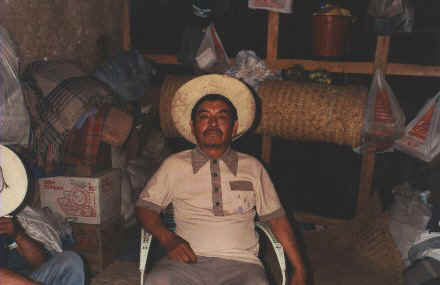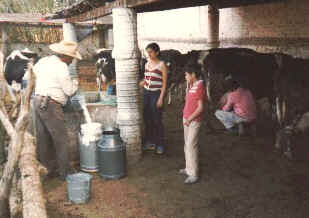 Agricultural proletarians: migrant cane cutters
Agricultural proletarians: migrant cane cutters
Lenin's "American Road" model postulated a situation in which capitalism developed within the peasant sector through a process of socio-economic differentiation.
 Agricultural proletarians: migrant cane cutters
Agricultural proletarians: migrant cane cutters
Lenin's "American Road" model postulated a situation in which capitalism developed within the peasant sector through a process of socio-economic differentiation.
Rich peasants in Russia were called kulaks, which literally means ‘fists’. Lenin argued that socioeconomic differentiation had been taking place in the Russian countryside in the late 19th and early 20th century. By differentiation he meant more than that some peasants were growing richer, whilst others grew poorer. Lenin distinguished three strata among the Russian peasantry: the kulaks, ‘rich or well-to-do’ peasants, ‘middle peasants’ and ‘poor peasants’. But he argued that this three-tiered structure was in fact polarising into a dualistic structure of a new type: rich peasants were becoming a rural bourgeoisie, hiring wage labourers who were poor peasants becoming rural proletarians. Some poor peasants were landless; others might continue farming a little plot of land, but all were unable to survive without working for wages as well. The middle peasants were being squeezed out of existence and reduced to the ranks of the poor peasants, as the rural economy became more commercialized.
Lenin assumed that the ‘bourgeois’ peasants were responding to the growth of commercial agriculture, profit-orientated, and accumulating capital by exploiting paid non-family labour: he also observed that these richer peasants owned the bulk of the draft animals, iron ploughs and other means of production in the countryside, and could be found buying up or renting the land of impoverished poor peasants. The ‘middle peasants’ were subsistence farmers, rather than people sowing cash crops for market sale, and their position was precarious, because they did not succeed in meeting family subsistence needs every year, and had to resort to loans repaid in labour for the emergent capitalist farmers. As Lenin put it: "every crop failure flings masses of middle peasants into the ranks of the proletariat".
Peasant family herd, improved bloodstock
Lenin's views about the inevitability of capitalist development in agriculture following the same basic pattern as in industry did not go unchallenged at the time even by fellow socialists. Karl Kautsky questioned the existence of a tendency towards large-scale wage-labour based production in agriculture in Western Europe. After 1875, grain was imported in enormous quantities from countries such as the USA, Argentina and Russia, which could produce it more cheaply than a European capitalist farmer, even allowing for transport costs. Kautsky also noted that in colonial or semi-colonial regimes, pressure of taxes might force peasants to unload their grain at any price. Kautsky argued that European farmers reacted by switching to intensive cattle and dairy farming and growing fodder crops, which was quite compatible with small-scale production units. Rents and profits fell, so big capital moved out of growing into agro-industry, leaving the middle peasants with a clear field in actual production of the raw material - animal or vegetable. Better-off peasants followed the example of the bourgeoisie and invested in the processing side, but through cooperatives. Thus, although Kautsky, as a loyal comrade, tried to defend the classical Marxian conception, he also made significant contributions to the production of an alternative account of the capitalist transformation of agriculture.
The principle challenge to Lenin's views in Russia came, however, from the populist agronomist A.V. Chayanov, who was eventually executed by Stalin. Chayanov tried to demonstrate that the agricultural statistics used by Lenin did not demonstrate irreversible capitalist class polarization, and he argued that the peasantry could play a significant role in the future socialist society supposedly being built in the Soviet union. His disagreement with Lenin therefore had important political implications, since he argued that peasants should be helped to prosper and modernise as individual family farmers through the establishment of cooperatives, and should not be seen as the class enemies of the (still very small) Russian urban proletariat.